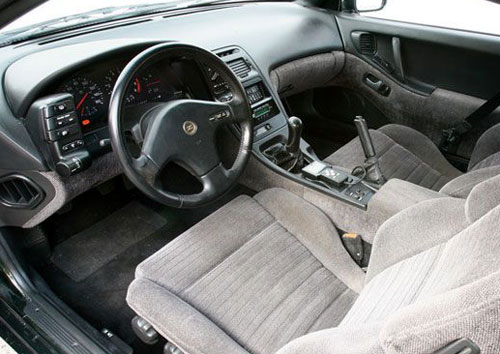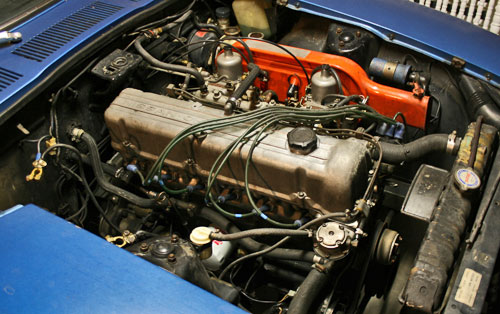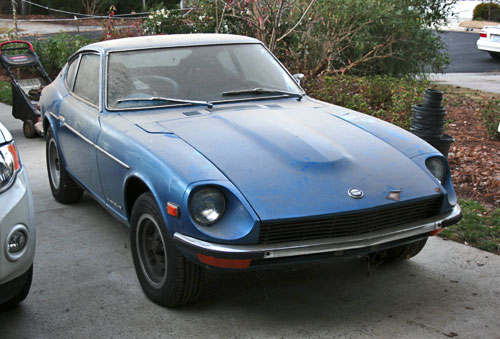Datsun 240Z Restoration: Carbs’ Return

The Z’s SU carbs returned from their visit to ZTherapy today, and I couldn’t be more pleased with them.
They’re clean as a whistle, and the action of every shaft and linkage is buttery smooth. The founder of ZTherapy had rebuilt them in the late ’90s, fitting them with the company’s signature ball-bearing throttle shafts in an effort to cure tune-distorting vacuum leaks; however, the seals failed and the founder’s remanufacturing process removed too much material from the aluminum bodies of the carbs for them to be refitted with new bearings. ZTherapy’s current owner was forced to use new cores during this latest rebuild, and he cleaned them, replacing all gaskets and rubber in the process too.

The icing on the cake was the presence of the mid-production-style knurled mixture adjustment knobs, shown above. Early Z SUs were fitted with knob without knurls, making it difficult to count turns when tuning, and late-model SUs had thin, notched discs, hard to grasp when rooting around under the carb bodies. I requested the knurled knobs, but ZTherapy declined to fit them, as they (understandably) like to keep the cores together and avoid mixing and matching parts. But then they did it anyway, a fact that really made my evening.

A view of the sealed (outer) end of the throttle shaft. A ball bearing resides under here. The new owner’s machining process removes much less material from the carb body, making for a much tighter fit around the throttle shaft, greatly reducing the chance the dust shields or retaining clips will work their way loose.
In other Z news, the wheels have been cleaned and fitted with the BF Goodrich Radial T/As, sized 225/60-14. Pictures forthcoming.
Editor’s note: This post is Part 10 of an ongoing series chronicling my efforts toward the restoration of my 1972 Datsun 240Z, originally my father’s. Read the other installments here:
- Part 23: Gutting the Interior
- Part 22: The Teardown Begins
- Part 21: …And the Engine Comes Out
- Part 20: Treasure Hunting
- Part 19: Beginnings
- Part 18: VIN Discoveries
- Part 17: The Bad News
- Part 16: On The Road
- Part 15: Getting It Back On The Road
- Part 14: It Lives!
- Part 13: Restoring the Fuel System, Part I
- Part 12: Meat on the Wheels
- Part 11: Inspiration (Sort Of)
- Part 9: First Triad Z Club Meet
- Part 8: Wheel Work
- Part 7: Tactical Changes
- Part 6: Little Things
- Part 5: Coming Home
- Part 4: The Rollout
- Part 3: Confessions of a Poor Car Enthusiast
- Part 2: Opening the Tomb
- Part 1: Projecting Forward





















